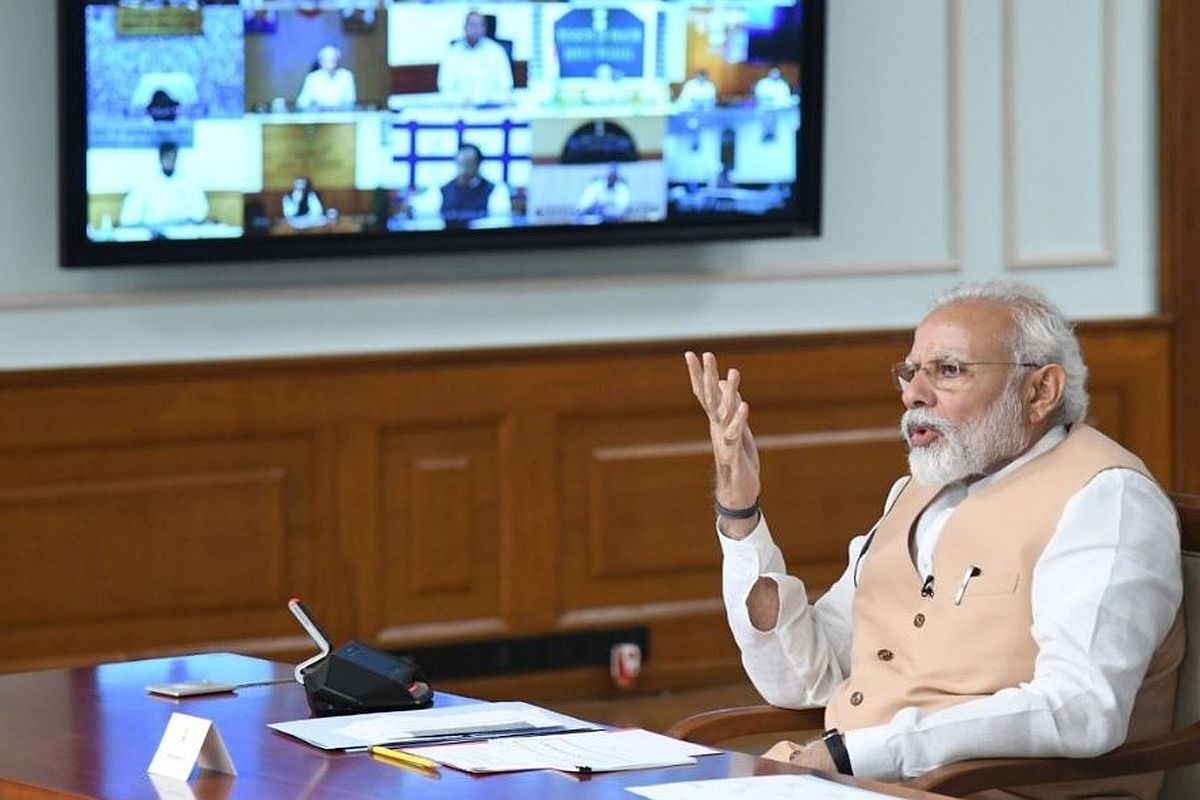It was on 10 January, 2020 when the Wuhan Municipal Health Commission issued a statement announcing the death of a 61-year-old man who was hospitalized with severe pneumonia.

Prime Minister Narendra Modi (File Photo: Twitter | @PIB_India)
It was then that the world was introduced to a newly-discovered coronavirus.
Then it just aggrandized into a pandemic, leaving no country immune to its deadly clutches.
As it turned out, different countries responded in different manners to fight the diseases, christened COVID-19.
Considering that it has a population of 1.3 billion, India simply could not take any chances, what with state of the medical infrastructure that would have simply collapsed if there were no tough decisive measures.
In fact, reports had suggested that Indian researchers tried to decode the DNA of the virus, which would be helpful in developing a vaccine.
This is the type of proactive approach that was required and the Indian government adopted it in the first instance, all the while world’s most developed economies were still trying to solve the riddle.
The Indian response to the COVID-19 pandemic has been very proactive and not reactive. Many countries essentially ended up taking the same steps that India took very early on in the curve.
This decision making in India has been possible because of the immense political will displayed by Prime Minister Narendra Modi who, unmindful of any criticism or negative political fallout, has put India’s interest first. It is because of him that when the most developed countries have struggled with their response to the Novel Coronavirus, India has set benchmarks in almost real-time.
Among the various significant factors attributed to the government’s will to contain the situation include – school closures, workspace closures, travel bans and eventually lock-downs.
This is a direct result of PM Modi’s bold, decisive, timely and humane decision making well ahead of global standards, like:
India starts with screening ahead of the curve starting with the screening of international passengers at Delhi, Mumbai, Chennai, Kolkata, Bengaluru, Hyderabad and Kochi. This was when India did not even have a single case.
Even before hitting a single case of Covid-19, India had already prohibited the export of N95 Masks and PPE.
By 30 January 2020, the day India’s first case of COVID-19 was reported, screening of passengers with travel history from China at 20 airports along with land border vigils was already happening.
At the same time, the government started to test all those who came from China after 15 January, 2020 and advised 14 days’ home isolation for them.
Visas were cancelled early on thus stopping the entry of foreigners.
Contact tracing and symptomatic patients testing were initiated in January 2020 itself to identify patients coming from abroad.
Seeing the situation in China, all e-visa facilities of China were suspended as a quick measure while all existing visas, except diplomatic, official, UN/International Organizations, employment, project visas, were suspended till 15th April 2020. This was when India still had less than 100 cases.
PM Modi announced an early lockdown which yet again reflects tough political decision in National interest starting with Janta Curfew on 22 March 2020 followed by a 21-day complete lockdown starting from the midnight of 24 March 2020.
The government acted ahead of the curve yet again.









